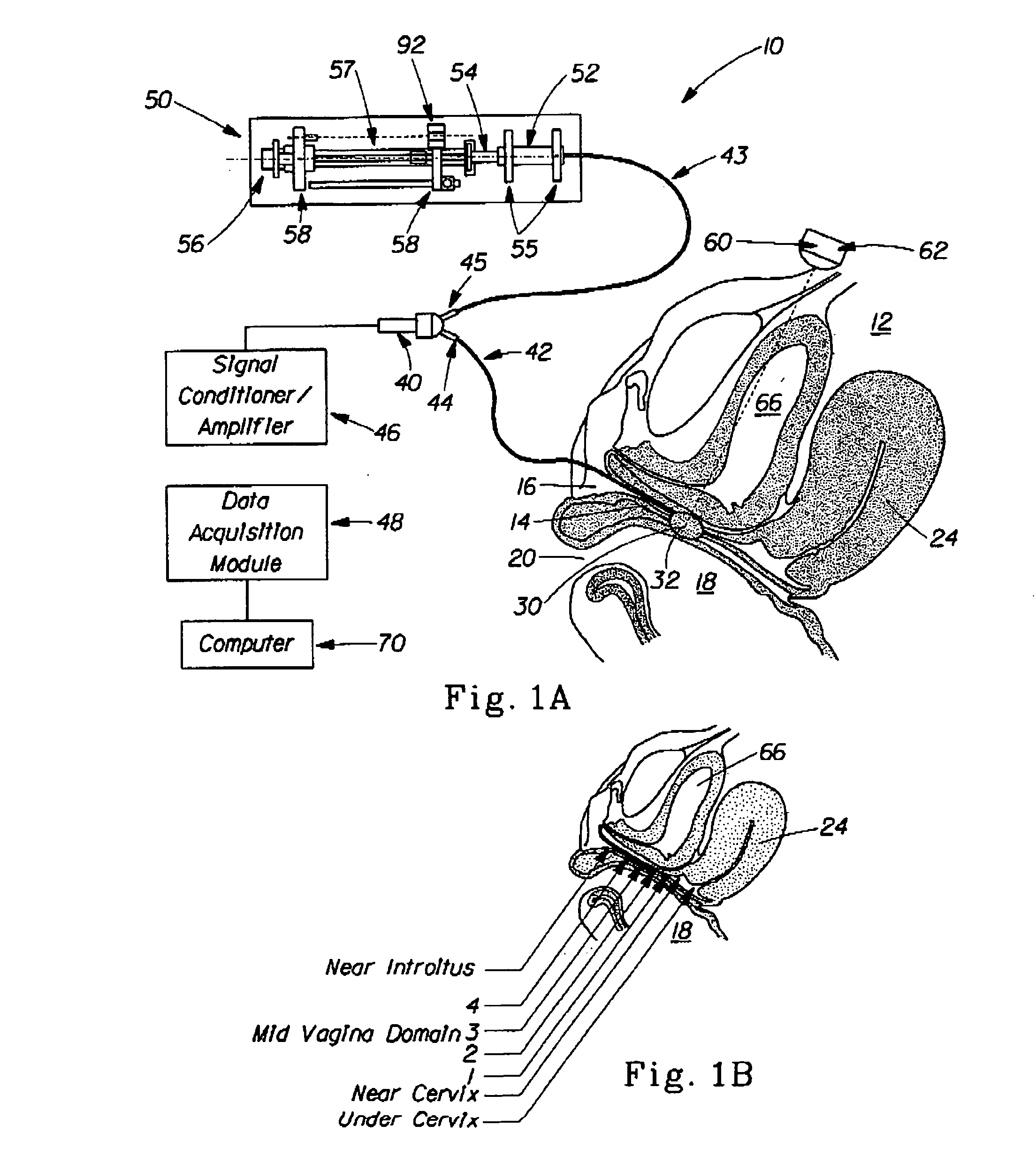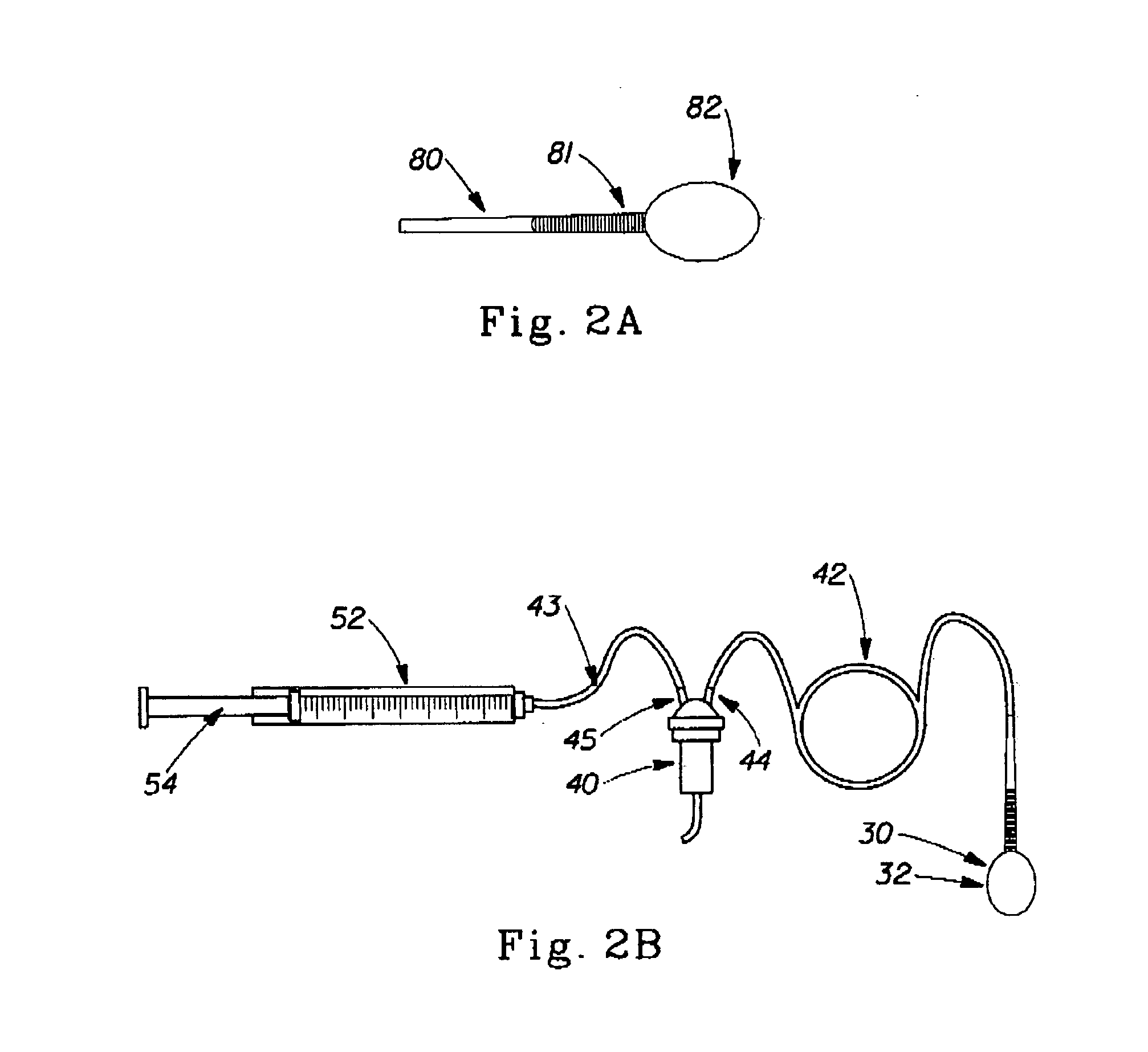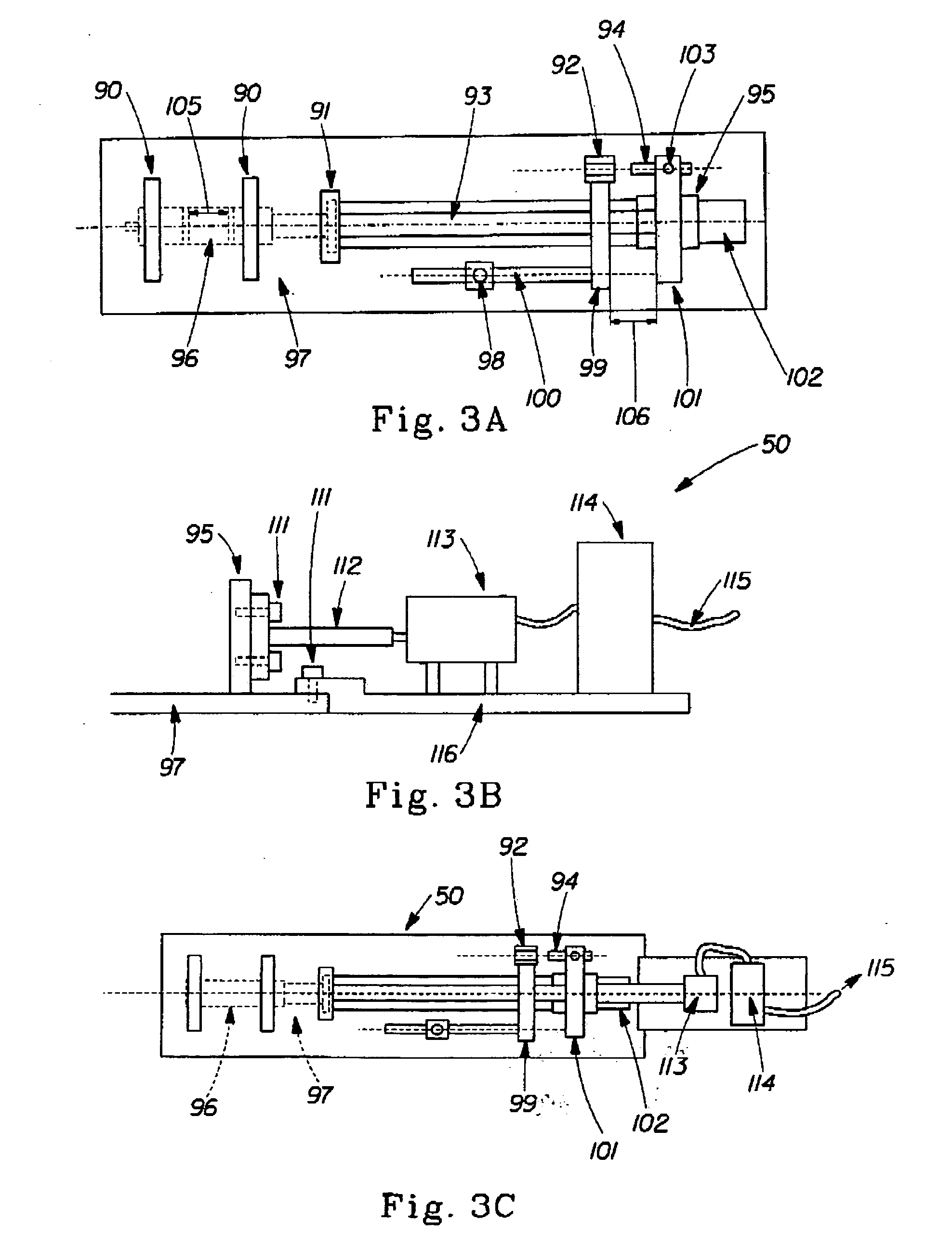Computational model of the internal human pelvic environment
a computational model and pelvis technology, applied in the field of measuring and determining the biomechanical properties of internal tissues or organs, can solve the problems of hampered efforts at accurately modeling the biomechanical properties of ‘living’ internal tissues, difficult in-vivo measurements of internal tissues to obtain biomechanical properties, and difficult characterization of internal tissues and organs
- Summary
- Abstract
- Description
- Claims
- Application Information
AI Technical Summary
Benefits of technology
Problems solved by technology
Method used
Image
Examples
Embodiment Construction
[0026] The method and device of the present invention overcomes the technical challenges and problems associated with determining in vivo the biomechanical properties of tissues. In particular, the method and device of the present invention can be used to determine location dependent biomechanical properties, i.e., properties that are specific to a particular location in the body and / or on a particular tissue. The method and device of the present invention can include a measurement system in a combined format of a strain gauge type physiological pressure transducer to measure the tissue loading stress, and imaging devices such as a CT, a magnetic resonance imaging (MRI), or an ultrasound imager to measure localized tissue strain profiles. Such imaging devices permit non-invasive, externally disposed probes to be utilized for the purpose of making measurements of static or dynamic tissue deformation. The method of the present invention also comprises a modeling internal tissues of a ...
PUM
 Login to View More
Login to View More Abstract
Description
Claims
Application Information
 Login to View More
Login to View More - R&D
- Intellectual Property
- Life Sciences
- Materials
- Tech Scout
- Unparalleled Data Quality
- Higher Quality Content
- 60% Fewer Hallucinations
Browse by: Latest US Patents, China's latest patents, Technical Efficacy Thesaurus, Application Domain, Technology Topic, Popular Technical Reports.
© 2025 PatSnap. All rights reserved.Legal|Privacy policy|Modern Slavery Act Transparency Statement|Sitemap|About US| Contact US: help@patsnap.com



